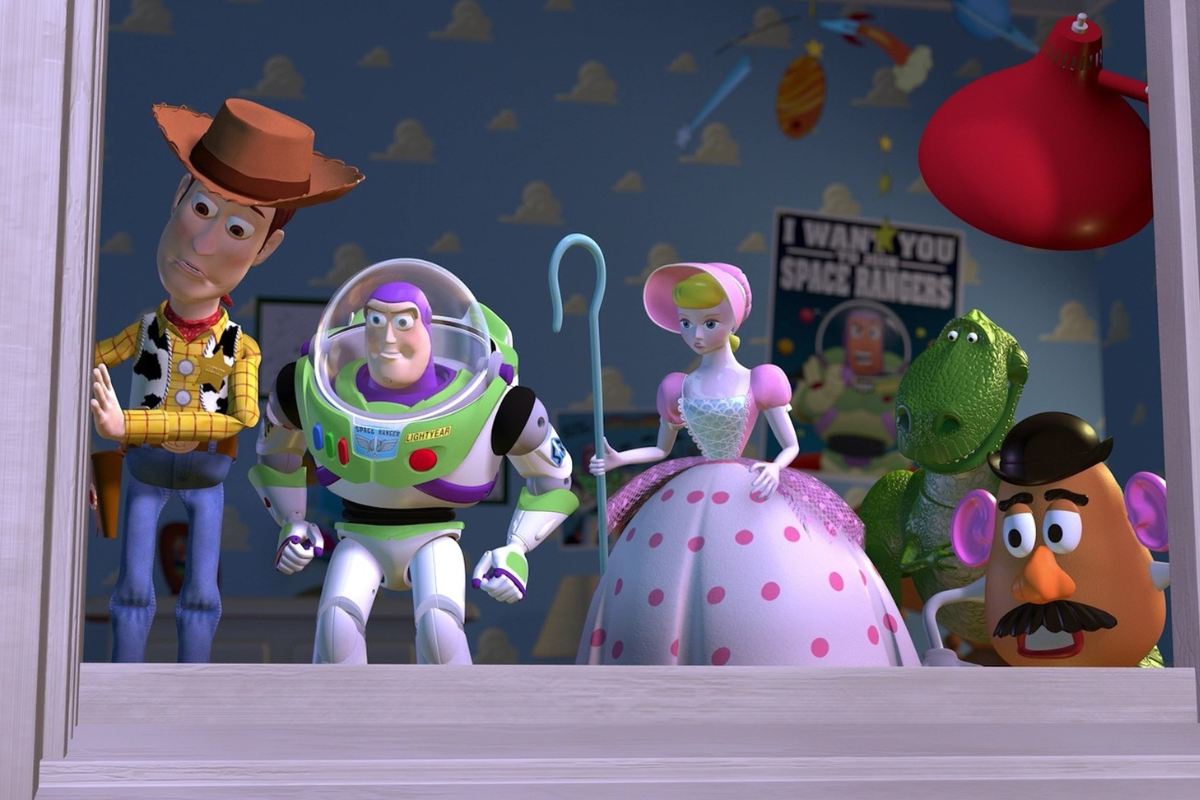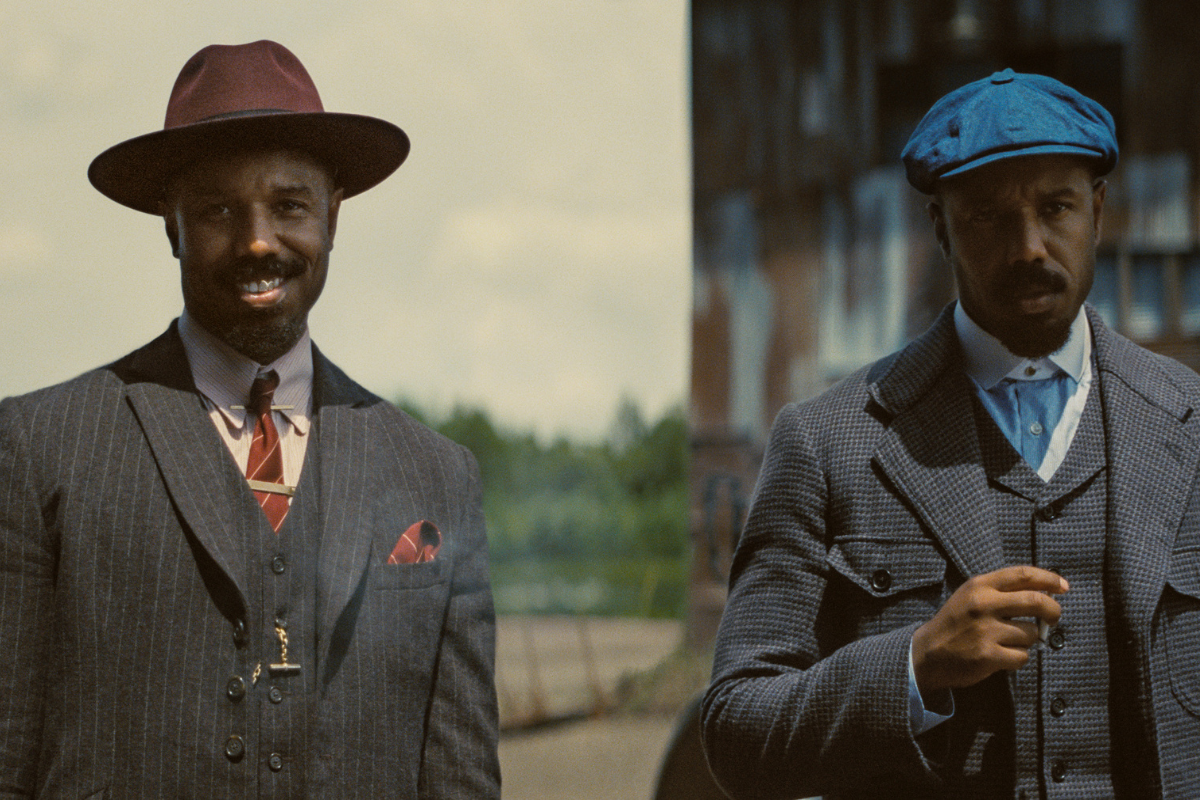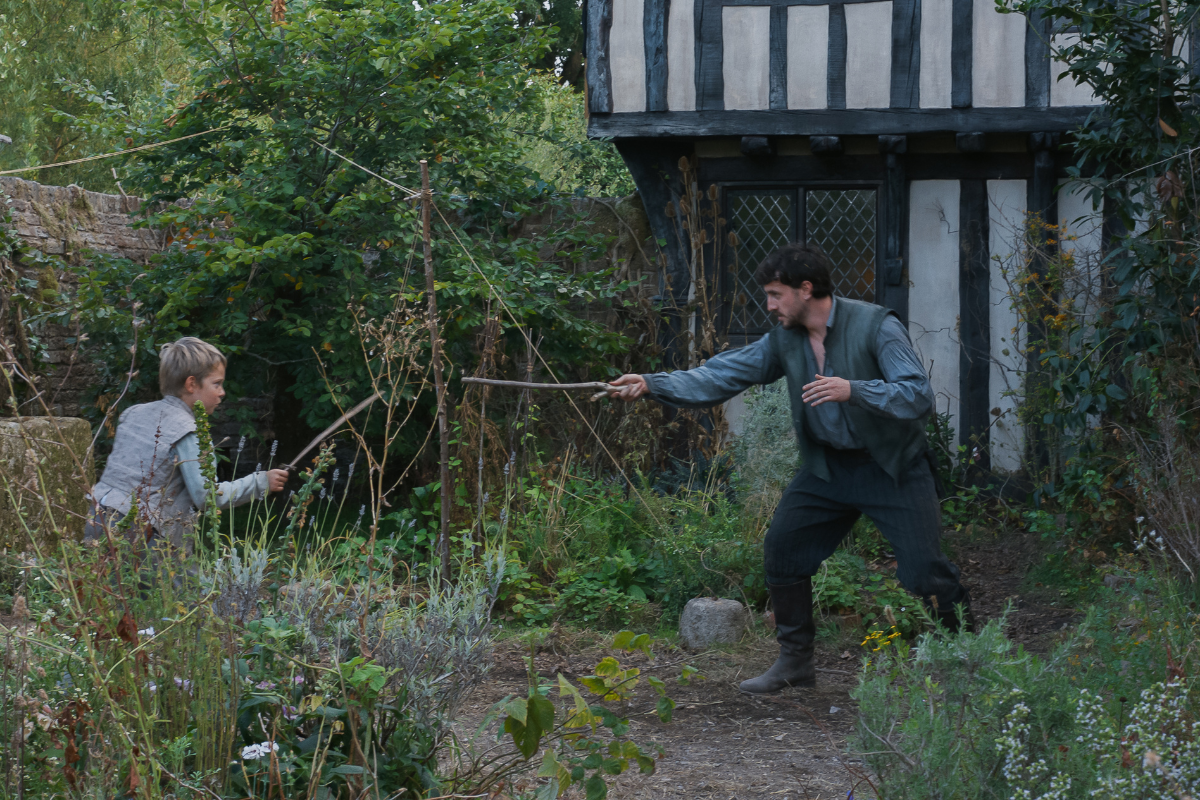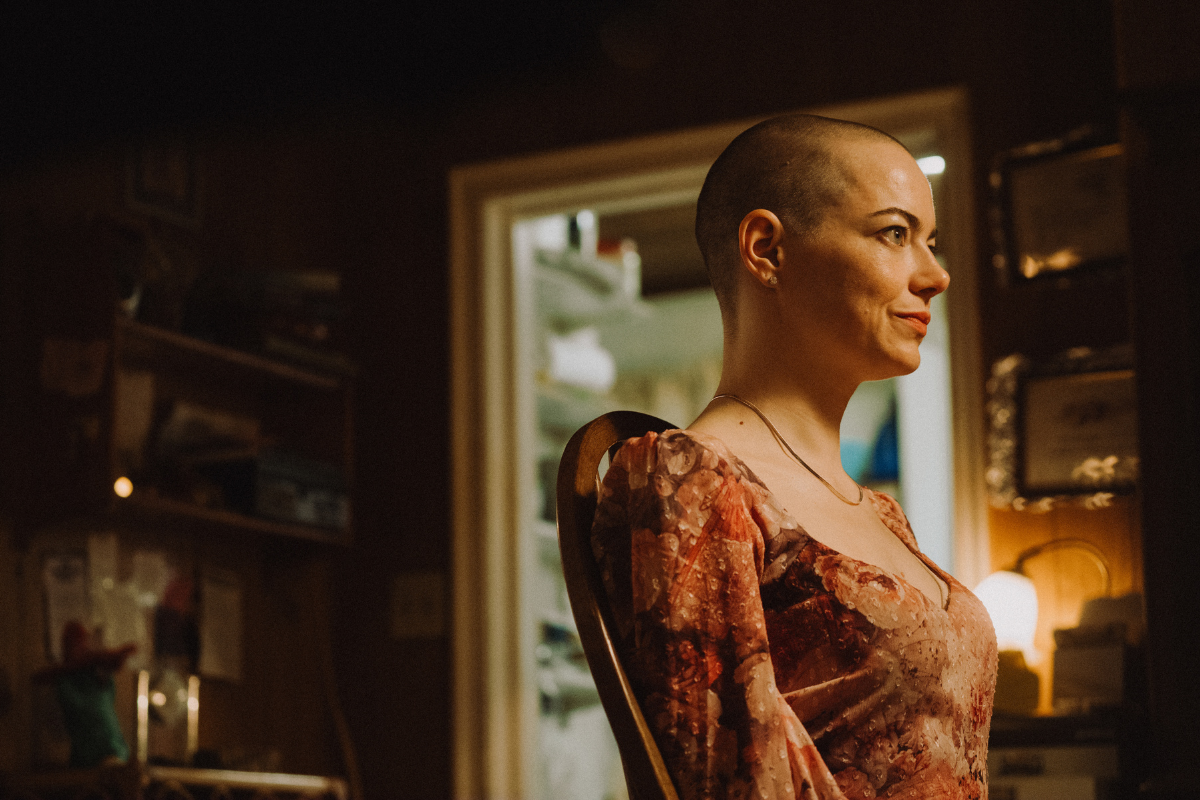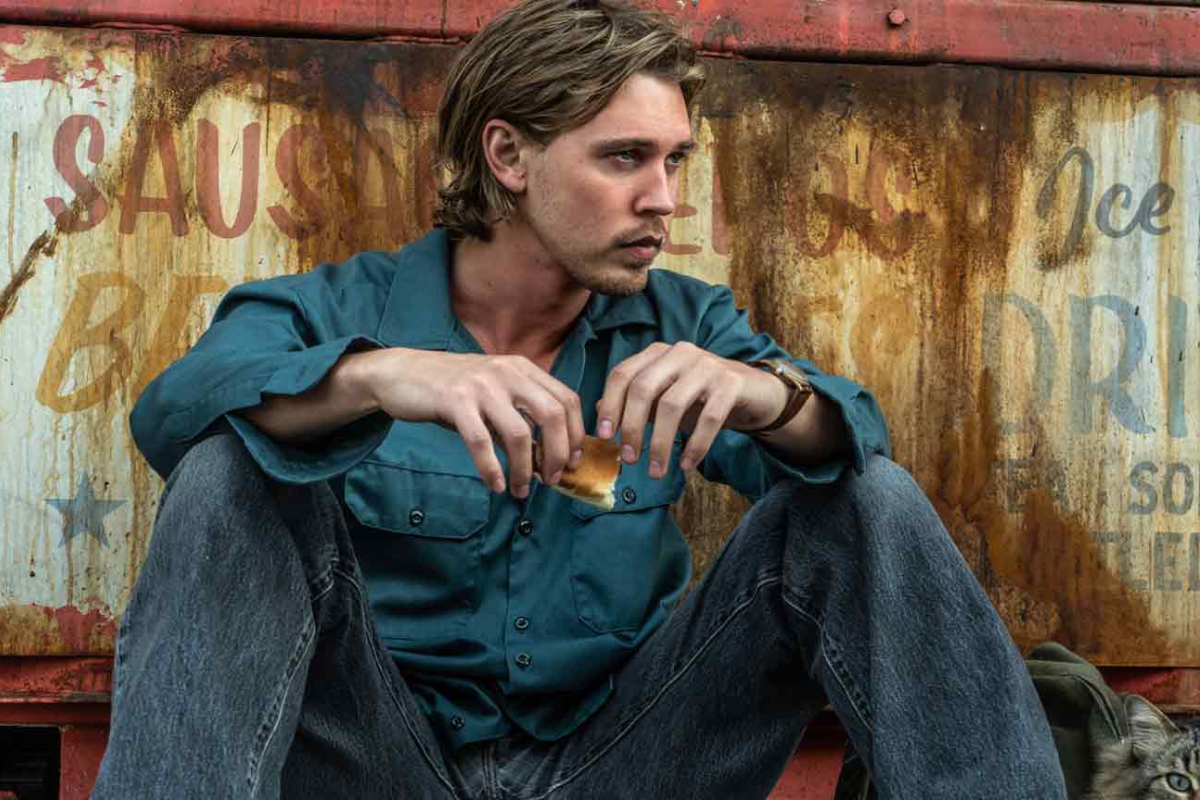SCRIPT NOTES: Major Character Types – “Reflection”
Characters are engines that drive ideas into a story. Each of the major character types plays a specific role in that process. Michael Tabb explores THE REFLECTION character.
WGA writer Michael Tabb has written for Universal Studios, Disney Feature Animation, comic book icon Stan Lee, and other industry players. Michael's new book, Prewriting Your Screenplay: a Step-by-Step Guide to Generating Stories, is available now. Follow Michael on Twitter @MichaelTabb and Instagram @michaeltabbwga.
A protagonist's reflection character is far too frequently the most underutilized of the five character purposes, especially by less experienced scribes. Like the other four previous character types (protagonist, antagonist, love interest and mentor), this one serves as a crucial ingredient in the process of creating drama, foreshadowing, establishing stakes, conflict and tension. Without well-constructed reflection characters, the audience has no reminders of the physical and emotional impact or risks involved with the protagonist’s choices and goals. This key role illustrates the importance of success and the cost of failure throughout the story. A protagonist's reflection character reminds the audience what the protagonist is trying to accomplish, illustrate its toll, and defines how the hero(ine) is unique. If what is at stake in the story is important (and it should be, or why would any writer bother penning an entire story about it), you cannot overvalue the importance of reflection characters.
Many classify the mentor as a reflection character because they fulfill many of the same dramatic functions in the story, including establishing the stakes involved and serve as someone to hold the protagonist's proverbial feet to the fire, but it's important to differentiate them. All mentors are a form of reflection characters but not all reflection characters are mentors. It's like the old parable that every thumb is a finger but not every finger is a thumb. A mentor's job is to literally instruct the protagonist; he or she is the protagonist's teacher or commanding officer. On the other hand, a protagonist may glean wisdom from other reflection characters within the trenches together in various ways through any method, mainly verbal advice or as a living example. The soldier right next to the protagonist, who pops his head up to see if the coast is clear from the trenches and gets it blown off by the opposing soldiers, is a form or reflection character. He reminds the audience in a very real way of what the stakes are for the central character if an error is made in the situation. In the analogy where the mentor is a teacher, a reflection character is a student while the protagonist is either a fellow student or somewhere in between as the T.A. There is a formidable difference in perceived rank between mentors and other reflection characters, so I do classify them separately, just as you can look up the word thumb separately from fingers.
Michael Hague describes “The Reflection” character as the one aligned with the hero, who holds his or her feet to the fire. He or she takes the protagonist to task or questions his or her actions. The reflection is a category of character type that includes a protagonist's pals, allies, partners, co-workers, teammates, and sidekicks. He or she comments on the protagonist's outer journey and is often along for the same ride. In modern cinema, to avoid the cliche of the love interest being tied to the proverbial railroad tracks at the climax of a film, it's common now to use a reflection character for that instead. In such situations, the reflection characters dies more often than a love interest in the same situation since it is a powerful blow to the protagonist, and the happy ending for the protagonist doesn't depend on these characters ending up together.
DEATH IN THE MIRROR
Fellow scribe and MFA scriptwriting educator, Garrick Dowhen, calls the reflection “The Ghost” or “The Conscience” of the story, because he or she frequently reminds the protagonist when they are screwing up. In Basic Instinct, Detective Nick Curran's partner, Gus, repeatedly warns and asks him, “What the hell are you doing?” This character reminds the protagonist when he veers off course; this reflection attempts to help the protagonist stay on the straight and narrow toward his or her goal. A reflection doesn’t necessarily have any dog in the proverbial race outside of the protagonist’s welfare. An atypical reflection has the best interest of the protagonist at heart. Nick does not heed Gus’ warnings, and his actions/indiscretions result in many unforeseen, direct consequences, which lead to Gus’ murder. This is commonplace among partners in cop, crime and caper films, including: Harry in Speed, Charlie Vincent in Black Rain, Pappas in Point Break, Jack Vincennes in L.A. Confidential, and Agent Oscar Wallace in The Untouchables to name a few.
A protagonist's reflection character provides the audience a clear understanding of the stakes and meaning of the hero’s journey. Reflections are all about the way in which they are aligned with the central character. They setup the pitfalls and/or can personally fall prey to them. They exemplify the struggle and cost as a warning, foreshadowing or example to the protagonist of what success or failure may look like. So, a writer designs a reflection character’s participation in the plot by using them to ask and answer (in dialogue and through actions) the following questions about the protagonist’s situation, regarding risk verses reward:
- What does the protagonist stand to lose?
- What does the protagonist stand to gain?
- How does the antagonist treat the people that oppose him or her? This leads to an important, stakes-oriented question…
- Exactly how dangerous is the antagonist and the obstacles before him or her?
Every reflection character must serve the story and protagonist in this way, or else you need to rethink how (or even why) you have chosen to use them. Reflection characters are a key element in establishing: 1) what can go wrong, or 2) serve as a promise/reminder of the potential reward and success for the protagonist.
Reflection characters are necessary to help illustrate and build fear as well as tension earlier in the story. That said, if the main reflection character is killed during the story (usually at a major structural turning point), the question of whether your protagonist can change grows more dire.
All cop partner and buddy movies are essentially reflection character based stories because the lead characters are a pair that serve as a living, external mirror to the goal and journey of the other.
Here is a list of non-mentor reflection characters who pay the ultimate price as a warning to the protagonist of the stakes involved:
- Brooks in The Shawshank Redemption,
- Goose in Top Gun,
- Tommy DeVito in GoodFellas,
- Fenster in The Usual Suspects,
- Manny Ribera in Scarface,
- Sonny Corleone in The Godfather,
- Miles Archer in The Maltese Falcon,
- Bubba in Forrest Gump,
- Louis Dega in Papillon,
- Clifford Worley in True Romance,
- Riff in West Side Story,
- Doc in The Marathon Man,
- Seth in Looper,
- Cleopatra Sims in Set-It-Off,
- Jackie Flannery in State of Grace,
- Richard Gecko in From Dusk Till Dawn,
- Johnny Cade in The Outsiders,
- Tommy in At Close Range,
- The Comedian in The Watchmen,
- Nick in The Deerhunter, and
- Sid Worley in An Officer and a Gentleman.
When a reflection character dies, it begs the questions, “Can the protagonist rise to the challenge without the outside help of their deceased ally? Can the protagonist develop this conscience without that character in their life to help or guide them?” This is a very crucial way in which a reflection character is commonly used in order to escalate the stakes. After all, the typical reflection often is used to portray the story’s conscience (i.e. the writer’s conscience and premise).
REFLECTIONS ACROSS GENRES
Now, not all movies are about life and death stakes, so death isn't always what threatens them. The reflection characters only experience the threat or the reward of what is at stake for the protagonist as a way of establishing potential outcomes for him or her. Without them, the protagonist and his or her audience never get a clear picture of what each step of the journey means because there's nobody to comment or be an example for it. Sometimes they simply provide verbal reminders, but they reflect the journey and comment on it through dialogue or example. So, here is a laundry list of other reflection characters by this traditional definition in various genres:
- Emily in The Devil Wears Prada,
- David in The 40 year-Old Virgin,
- Walter in The Big Lebowski,
- Reed Rothchild in Boogie Nights,
- Chuckie Sullivan in Good Will Hunting,
- Rod Tidwell in Jerry Maguire,
- Paulie in Rocky,
- Rex in Swimming with Sharks,
- Melanie Hamilton in Gone with the Wind,
- Hamish in Braveheart,
- Athos in The Three Musketeers,
- Will Scarlet in Robin Hood,
- Wamba in Ivanhoe,
- Norm Spellman in Avatar,
- Dr. Ian Malcolm in Jurassic Park,
- The Scarecrow in The Wizard of Oz,
- Claudio in Much Ado About Nothing,
- Itzhak Stern in Schindler's List,
- Cosmo Brown in Singin' in the Rain,
- Chloe in Pitch Perfect,
- Kenickie in Grease,
- Doc Holiday in Tombstone,
- Ned Logan in The Unforgiven.
- Dick Greyson in Batman & Robin,
- Miles in Risky Business,
- Cameron in Ferris Bueller's Day Off,
- The Geek in Sixteen Candles,
- Stiles in Teen Wolf, and
- Peeta in Hunger Games.
They do this in film after film, genre after genre, in many different ways...
If the story is about love, reflection characters illustrate what the protagonist stands to lose if they do or do not succeed in love, from heartbroken and alone to miserably married. In any love story, the old spinster, cat lady, aging gigolo, family guy with too many kids and whipped, the eternal swinger that has nothing to come home to at the end of the day except a shallow existence… These are all reflections of the potential fate of your protagonist. They foreshadow or warn them of the stakes if the love story does or does not succeed. The older married couple in a romantic comedy (whether they finish each other’s sentences, sacrifice to care for one another when one has lost their faculties, or they can no longer stand one another) is a reflection of the film’s potential marriage. The romantic interest’s latest lover or exes are also reflections of the protagonist’s potential situation. Even the love interest can be a reflection with similar goals or opposite ones, reflecting the protagonist’s inner journey. Those can make the most interesting love stories. From positive examples like Marie and Jess in When Harry Met Sally to antithetical reflections to the protagonists' fate in Pretty Woman, such as Kit De Luca and Philip Stuckey.
In pulp noir films, you can look at P.I. Sam Spade’s partner Miles Archer in The Maltese Falcon or Jules Winnfield in Pulp Fiction. In the first case, Archer gets murdered in a deadly game of deception, lies and betrayal, establishing the stakes very early on. Jules continuously tries to convince Vincent Vega to make better choices. He warns Vincent about the stakes involved with taking out Mia Wallace as well as attempting to get him to change his ways in the light of a “miracle.” Not listening to Jules results in a lot of very volatile situations and leads to Vincent's untimely demise.
In a horror film, you will have a protagonist attempting to escape some horrific fate as a series of reflection characters meet the terrible end that your protagonist is threatened with as a form of foreshadowing.
In comedy, look at Chazz Reinhold in Wedding Crashers, who starts as a legend and known as a mentor. He exemplifies what happens if the protagonists refuse to change. Lazlo Hollyfeld in one of my favorite college comedies, Real Genius, is the character that was the genius of geniuses, who cracked under the pressure and now lives in their dormitory closet.
In action films, Sgt. Al Powell is the constant moral support system that helps John McClane keep going at his low points in Die Hard. Goose in Top Gun constantly reminds Maverick of the stakes, holding him accountable for the cost of each reckless move. Tony Stark keeps Bruce Banner's feet to the fire, pushing for his involvement and to develop into more than a fellow skeptical thinker into a superhero in The Avengers.
Science-fiction/fantasy films have some of the best written reflections with Spock (one of the greatest, most uniquely written allies ever devised) in the iconic Star Trek series and Samwise Gamgee in TheLord of the Rings saga. Neville Longbottom in the Harry Potter franchise is particularly clear reflection as another Hogwarts student in Harry’s circle whose parents were also both taken away from him by Voldemort when he was a baby.
In the swashbuckler genre, Indigo Montoya reflects Wesley in The Princess Bride. He sets an example for Wesley regarding courage, determination, loyalty, and the pursuit of a worthy quest having to do with unrelenting love (be it romantic or familial). In return, Indigo is offered Wesley’s alternate identity in the end, the Dread Pirate Roberts. That’s a brilliantly structured reflection. They start the film at odds with one another, but they end up storming the castle together as allies in the film's climax, both on a mission to do right by those they love.
REFLECTION CHARACTERS and the PROTAGONIST'S CHARACTER ARC
Michael Hague explains that the protagonist often achieves his or her character arc (in best case scenarios) as a result of the traditionally defined reflection character. This is done through a moment of comparison with the protagonist. There are two characters that a protagonist measures himself or herself against during the escalating story, an antagonist and the reflection, usually at some point in the second half of act two. You all know the typical scene I’m talking about with the nemesis; when the villain tries to convince the protagonist they are the same, deep down. That moment always sticks out like a sore thumb. Yet what many writers do not notice is that on the other side of things, there is also a similar moment with a well-drawn reflection character that defines the protagonist as a hero. In fact, the character arc’s transformative moment occurs when the protagonist realizes their similarity to the antagonist and their difference from the reflection.
When audiences witness the difference between the guts (intentional fortitude) of the reflection character and measure it against that of the protagonist, it says a lot about who is truly heroic. They often get practical advice from the reflection and break away from it. The moment when the protagonist takes dramatic action despite all present dangers and advice is where the protagonist’s character arc can occur and the status of “hero” is earned. The protagonist establishes himself or herself as uniquely extraordinary. A perfect example of this is when Han plans on abandoning the rebels in the face of impossible odds, asking, "What good's a reward if ya ain't around to use it?" Meanwhile, this moment personifies Luke's enormous character arc from a reluctant farm boy, who originally insists he'd like to help but has chores to do, into a full-blown hero. Then Han reflects Luke's example, changes his mind, and comes to Luke's aid during the climax.
In Aaron Sorkin’s script, A Few Good Men, Lt. Sam Weinberg (co-council and a traditional reflection character) tells Lt. Daniel Kaffe (the protagonist) that he (nor Kaffe’s famous lawyer father) would risk putting Colonel Nathan Jessup on the witness stand. No moment better personifies this departure point, separating the protagonist from everyone else, as when Sam points out that it's irrelevant what anybody else would do in this situation. The question is 'What will the protagonist do?' This begs the major discerning questions that quantify how heroic your protagonist has become, by asking, 1) how bold is the hero, and 2) how far will that character go to attain his or her goal? Differentiating himself from anyone else in his decision to put Jessup on the stand triggers the completion of Kaffe’s character arc to stand up for something with all his guts.
There are two ways to see this moment, and either works. It all boils down to the writer’s personal perspective on the concept of character arc. Either Kaffe is 1) changing who he is in this moment, or 2) he is finally finding the strength within himself to be the man he has always been but somehow lost along life’s journey. This pinnacle moment in the script signifies the character arc, whether you see it as an internal growth into a new self or a return to his true self. The later sentiment is best stated by Shakespeare in Hamlet when Polonius advises his son before a long journey, “This above all: to thine ownself be true, and it must follow, as the night the day, thou canst not then be false to any man.”
This reflection-protagonist shared, character-defining moment in A Few Good Men is all about a character living up to their true or new self. This is where the protagonist must make a decision based on who he is, his values, his core, his belief systems, and knowing what he must do or risk never being able to look in the mirror again. Kaffe cannot be the man he wants to be (or is, depending on your perspective) without taking this drastic action. He CANNOT avoid it. He must fulfill his fate and take the extraordinary step in front of him and bite the proverbial bullet. This beat is about having the courage to do what the protagonist knows is right, regardless of the forces aligned against him. Obviously, a lot of tragic heroes have to make this choice with dire consequences.
Kaffe’s inner journey focuses on the question of whether this settlement-happy, paper-pushing attorney with a reputation of cutting deals without ever going to trial will ever be a real trial lawyer like his legendary father. Will he live up to his true/new-and-better self? Kaffe’s actions and life both center around the philosophy that anything is negotiable, right up until the end of act one when he passes on a remarkable plea deal. Act two begins the character arc of standing up for something, begging the question if he will relent and buckle as the stakes and pressure rise.
Kaffe has an enormous transformation, and it is the reflection character that makes it crystal clear to the audience. Sam’s role is crucial in 1) clarifying how far the protagonist has come since act one, and 2) how he differs from other worthy trial lawyers as truly heroic. This was an important function, while it was a second reflection character, Lt. Cdr. JoAnne Galloway, that did the previously mentioned purpose of the reflection character of holding the protagonist’s feet to the fire as turning points occur. The writer reminds us of this right in the middle of his showdown with Colonel Jessup is on the stand. It looks like the witness will not crack under the pressure. Sam and even the staunchest of defense attorneys, JoAnne, shakes her head for him not to continue. Kaffe's hands shake as he takes a sip of water. Nobody else would continue at this point, but Kaffe does.
REFLECTIONS must be DIFFERENT from the PROTAGONIST
It's integral that reflection characters are not too much like your protagonist because every character needs to be unique. Their goals may reflect one another, but they have to different in other ways. Though Vivian Kensington does not start the film as an ally to Elle in Legally Blonde, she reflects how Elle would like to be treated, but they are polar opposites. Elle is a spunky, fun, super-positive, pink-obsessed blonde that sprays her pink resumes with perfume and keeps company with sparkly, loud gal pals from L.A. Vivian is a snooty, driven, prepared, conservatively dressed, super-serious and raven-haired. Vivian is all your preconceived notions of what you’d expect from a legacy, blue-blood, Harvard law freshman. As a result, she is taken seriously and has even has usurped the affections of the ex-boyfriend that Elle changed her entire life and got into Harvard in order to win back. In short, Vivian embodies everything an Ivy-League law student is supposed to be; yet Elle can never and will never be like Vivian because it’s not who she is. So the question becomes, can Elle achieve everything Vivian does, or will Elle’s immeasurable optimism, love and dreams not be enough to rise above the trials she must endure just because she’s different?
In Legally Blonde, there are numerous reflection characters; each serves their purpose. Paulette is an example of what can happen to Elle if she does not succeed in becoming a lawyer as an attractive woman that has gotten older and was recently dumped by a lousy guy. The gal pals from L.A. reflect what she could be like as well if she decides to revert to the person she was before Harvard. Look at Dorky David Kidney and Brooke Taylor Windham and the different law professors mentioned in the mentor article as well… Every one of them holds her feet to the fire and support her. That distinguishes the reflection character from all the other character types in one very important way.
There is NO LIMIT on the number of REFLECTION CHARACTERS in a script
Now, most writers design a script with one specific reflection character in mind by design, and good writers know better than to dilute a great reflection character's potential by chopping it into many characters. Yet it is undeniable that unlike the previous four character types, at the end of the writing process, there are often many more than one or two characters in a script can function as a reflection character. Sometimes different reflection characters serve different reflection character jobs, whether: holding the protagonist’s feet to the fire, or illustrating what is at stake, what can be lost or what can be gained, or bringing perspective on the protagonist’s individuality. They all reflect the protagonist's outer journey and possible outcomes.
I am aware that stating more than one character can fill any singular character purpose goes against many screenwriting gurus’ philosophies. They often say a script can have only one protagonist, one antagonist, one love interest and only one reflection character. I say go and look at any story with a team of people following a protagonist, and you will find several reflection characters. Some more integral than others, some I would consider separately as mentors, others as partners or allies, but multiple reflection characters nonetheless. There’s a whole team of the reflections in The Matrix (the most symbolic of Neo’s options being the ally that betrays him, Cypher), Planet of the Apes (George Taylor’s fellow astronauts are shot and lobotomized) and Harry Potter and the Order of the Phoenix (Dumbledore's Army). They are all reflections of the protagonist's journey in one way or another.
Now, my next article will take the above character definition and twist it in a major way. The notion of what qualifies as a reflection character will go a step further than it has ever been taken. Stay tuned for our dynamic conclusion of this series on the five major character types.
Until then, keep writing.
- More articles by Michael Tabb
- Column D: Writing the Buddy Picture
- Specs & The City: Unreliable Narrator and 'Fight Club'
Get tips on character and plot development
with Michael Hauge and Christopher Vogler's DVD
The Hero's Two Journeys
Michael Tabb is a firm believer in giving back to fellow artists in an ongoing effort to constantly elevate the medium of visual storytelling through the exchange of free-flowing ideas. This column is one WGA writer’s perspective of entertainment from within the screenwriting trade, including craft as well as industry, occasionally separating conceptions from misconceptions. It’s part trade analyses and part opinion column. Writers are story surgeons. Scrub in and let’s dissect this living, breathing, evolving thing we do called entertainment writing. Read the book inspired by Michael's articles at Script Magazine Prewriting Your Screenplay: A Step-By-Step Guide to Generating Stories, and follow him on Twitter: @MichaelTabb, Instagram: @MichaelTabbWGA, and Pinterest.



